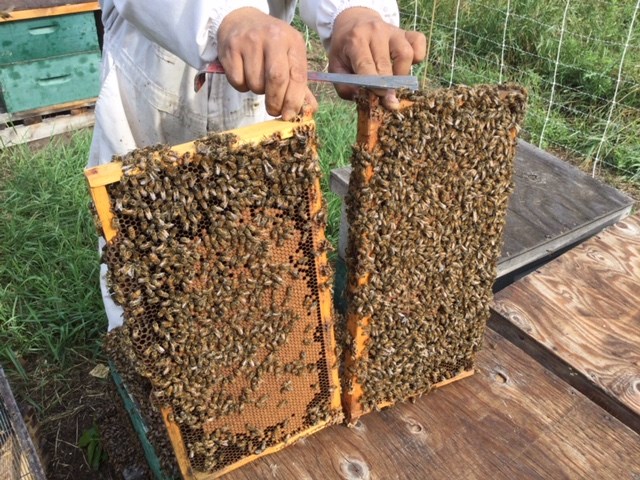BONNYVILLE – Beekeepers are now on the list of producers eligible to apply in phase two of the AgriRecovery response initiative that was rolled out following a summer of drought that extended across the Canadian Prairies.
The exceptionally dry and hot summer also aligned with an unprecedented population explosion of Varroa mites that had a widespread effect on bee colonies in the province.
The first phase of AgriRecovery focused primarily on cattle and other livestock producers – beekeepers were excluded from the first rollout of the relief program.
Phase two will be the first opportunity apiaries will have to seek a feed subsidy through the 2021-Canada-Alberta Livestock Feed Assistance Initiative.
From Jan. 5 – 31, Alberta beekeepers with a minimum of 100 hives will be able to claim a portion of that relief package based on the number of colonies they winterize.
To offset the extra costs incurred by producers for feed, phase two of AgriRecover will provide eligible beekeepers compensation for “one payment for up to 70 per cent of the extraordinary costs associated with feed (pollen patties or syrup) required to prepare eligible hives for winter to a maximum of $7.50 per hive/colony,” states the Agricultural Financial Services Corporation (AFSC) website.
David Tharle, who has owned and operated T’N’T Apiary outside of Ardmore with his wife since 1986, tells Lakeland This Week that phase two of the AgriRecovery initiative was welcome news to the beekeeping community.
Following a summer of record setting high temperatures, Tharle says apiaries faced significant reductions in their honey harvests, as well as the population outbreak of Varroa mites in hives across the province that occurred unusually late in the season.
“Whether it was the heat that caused (the increase of mites) or something else, we still don’t know,” Tharle says, adding that whatever the cause, hundreds of colonies collapsed as a result of the unusual season.
Although T’N’T Apiary’s 2,400 colonies faired far better than many other beekeepers' colonies, Tharle notes that his business was not immune to the exponential rise in price for sugar required to feed bees over the winter months.
“This year, we have seen the price of sugar increase by about a third of the cost,” says Tharle. Giving a rough estimation, he explains a metric ton of sugar that may have cost around $850 last year, could cost producers between $1,300 – 1,400 this year.
While more established apiaries may have been able to absorb the rising cost of feed, Tharle says for those starting out or who experienced a large colony collapse – the relief package will help significantly.
“After last summer, some wives and husbands have had to go back to work other jobs to make up for what they lost,” he says.
Discussing the droughts impact on other apiaries, Tharle noticed that while his colonies were able to find alternate food sources other than the canola fields they traditionally visited, the further west an apiary was located the worse affected their colonies seemed to fare.
“As you moved west, the impact became greater,” he states, noting that “Mallaig (was impacted) somewhat, Ashmont a little more, Smoky Lake more so and so forth... They had less of that June rain system and perhaps less ground water to begin with.”
Overall, Tharle says one benefit of the relief program is how accessible the application is compared to other agriculture subsidy programs, and “I guess its success all depends on how long it takes to deliver the cheques.”
According to the Government of Alberta, the initial and secondary payments made available by both the federal and provincial government for the financial relief package are expected to place up to $340 million into the hands of Alberta producers. This is to offset the extraordinary costs incurred by producers during and following the 2021 drought.
AgriRecovery is a federal-provincial-territorial disaster relief framework to help agricultural producers with the “extraordinary costs associated with recovering from natural disasters.”



